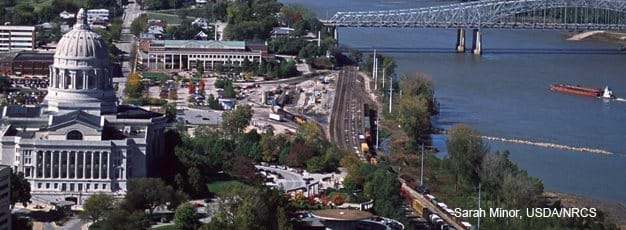Agriculture and Water Quality Trading: Exploring the Possibilities

Water quality trading is a market-based approach intended to reduce pollution at a lower cost than through traditional regulatory action. The Environmental Protection Agency and USDA are actively promoting water quality trading programs in watersheds impaired by pollutants, such as nutrients, produced by both regulated and unregulated sources, such as agriculture. Polluted runoff from agricultural fields is not regulated under the Clean Water Act, and greater use of trading might increase the number of farms willing and able to change their farming practices to reduce nutrient runoff.
Under a trading system, a regulated source of water pollution (such as a factory, wastewater treatment facility, or power plant) can pay an unregulated source, such as a farm operator, to reduce pollution rather than reducing its own discharges. These transactions usually involve the regulated firm purchasing pollution credits (or offsets) from an unregulated firm. Firms choose to participate when it is financially advantageous to do so (see “Creating Markets for Environmental Stewardship: Potential Benefits and Problems,” Amber Waves, September 2008).
To succeed, a trading program must be located in a watershed where Federal regulations have placed caps on the amount of pollution from nutrients that can be legally discharged. In order for farmers to benefit by participating in a market, there also must be sufficient demand for agricultural offsets from regulated sources, as well as an adequate supply of low-cost agricultural offsets from farmers.
States have reported nitrogen-impaired waters in 710 watersheds that potentially could support the formation of a water quality trading market. In 68 percent of these watersheds, agriculture is estimated to be responsible for over 90 percent of the nitrogen loadings. As a result, the demand for nitrogen offsets by nonfarm regulated sources would likely be small. While a market might develop, only a small percentage of agriculture’s nitrogen runoff would be eliminated through practices funded by water quality trading.
The demand for and supply of nitrogen offsets is more balanced in the 142 watersheds where agriculture’s nitrogen contributions ranged from an estimated 50 to 90 percent. If a successful market develops within these watersheds, enough financial resources could flow to farmers to significantly reduce nitrogen runoff from agriculture. A water quality trading market is likely to attract farmers who can reduce nitrogen runoff relatively easily and inexpensively. Farmers who already practice good nutrient management, however, might not be able to reduce runoff further without substantially increasing costs.
ERS researchers found that, in these balanced watersheds, no more than 22 percent of cropland was under a nutrient management plan developed with assistance from USDA, and most had less than 5 percent. In most of these watersheds, therefore, agriculture is likely to be a relatively cheap source of nitrogen offsets.
While not a panacea, water quality trading can effectively involve agriculture in efforts to abate nutrient pollution in a number of areas. Where such trading programs are successful, USDA’s conservation programs—which also provide incentives to farmers to reduce nutrient runoff—would be able to address other environmental issues.
The Use of Markets To Increase Private Investment in Environmental Stewardship, by Marc Ribaudo, LeRoy Hansen, Daniel Hellerstein, and Catherine Greene, USDA, Economic Research Service, September 2008


